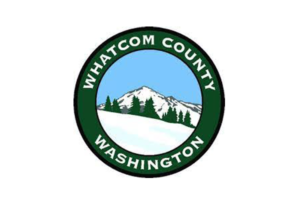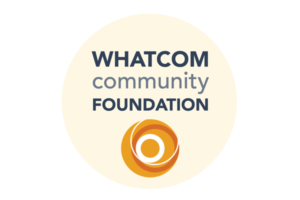Food System Planning: What is it? Why do it?
Cities and counties across the U.S. create Master Plans or Comprehensive Plans to lay out their community’s vision for land use, economic development, transportation, health, and other dimensions of civic life. These plans are regularly updated to reflect the changing community context.
Mobile markets, urban agriculture, food hubs and many other innovations of the local food movement often are not included in these standard plans, although communities are increasingly asking for them. Now, many municipalities have begun to intentionally plan for their local food economy – both by incorporating food systems language into existing plans, and by creating stand-alone master food plans.
So, what are the benefits of food system planning?
As we know, healthy, sustainable regional food systems bring economic, environmental, and social benefits to communities. Planning brings structure and strategy to local food systems, and sets the policy foundation for their growth. Food System Plans can foster economic opportunities in the agriculture and food sectors; reduce energy and resources needed in food production by promoting regenerative agriculture and sustainable farming practices; and help protect land, water, and air quality. Planning for food systems can also improve health by promoting access to nutritious, fresh food.
Food system planning at its best is a collaborative process that engages many stakeholders – farmers, retailers, consumers – with local government to strengthen their community’s food system. Food system plans often include an identification of the challenges (building on a food system assessment), and then propose policy changes to address those challenges.
Here are some examples of what those policies look like:
► Farm and food friendly land use policies and zoning;
► Personnel dedicated to food system issues;
► Utilities provided for free or reduced rates to food system partners;
► Public education programs about food and agriculture;
► Public investments in these areas, through grants and incentives; and
► Tax relief and reductions or waivers in fees for licenses, permits, etc. for food system players
One of my favorite examples is the Douglas County Food System Plan I helped create while serving as the Sustainability Director for the County. While we didn’t do everything right, I’m proud of our Food Policy Council and staff for some of the things we did well:
We took our time. Okay, this drove me nuts at times, but we were intentional about making sure we engaged all food system stakeholders in the process. We spent the time to go to them, attend their neighborhood meetings, and hear their stories. It was slow, but worth it. Our plan was so much richer for that time spent.
We experimented. We didn’t know exactly how to reach the folks in our community who are traditionally left out of planning processes, so we partnered with a nonprofit, the Sunrise Project, who did. With them, we hired eight coordinators to help us collect stories of marginalized communities’ experiences with food. They hosted meetings in living rooms, barber shops, and community centers where they heard directly from folks traditionally left out of the planning process. This enriched the Plan immeasurably, and ensured it was grounded in the community context – and not just that of the usual voices in our public square.
We identified our partners. A lot of great plans read like a “wish list” of food system policies. While this is great, and often inspiring, it can result in a plan that sits on a shelf because no one knows who’s responsible for what. So, our plan named responsible parties, whether it was the city, county, a nonprofit, or research and extension. This is helping all parties stay accountable for the work agreed to.
We kept our elected officials engaged. We invited our County and City Commissioners to all of the events, and we presented them with the forming plan at multiple stages of the process. That way, when it was time for them to adopt the plan, they had been watching the process evolve and were bought in to the effort. I can’t stress enough how important this is: If you eventually want your plan to be adopted by elected officials, don’t surprise them with it at the end. Keep them engaged throughout so they can be assured that the process is thorough, and that the results are what voters want.
Ready to tackle a food system plan for your community?
First, identify who will lead this effort. In our Douglas County planning process, the effort was led by county planning staff with considerable input from the Douglas County Food Policy Council and the Sunrise Project Coordinators. There are so many great resources for planners to get started, and to learn best practices from other communities:
The American Planning Association provides some great tools, guides, and sample food system plans from across the country.
The Growing Food Connections partnership highlights communities doing collaborative food system planning, and has some great webinars with real on-the-ground experiences from communities.
Second, be sure that the timing is right. Is your community about to launch a process of updating its comprehensive plan or conducting a community health assessment? That might be a great time to start building food system language into an existing plan or process that already has momentum.
And finally, be sure you have your champions engaged. Elected officials and community leaders will need to be convinced of the value to your community. Be sure you can answer the “why” question that they will inevitably ask. Spend some time generating a list of benefits specific to your community.
Have additional questions? You can always reach out to New Venture Advisors for help!
Image: Rawpixel.com / Shutterstock




Excellent article! You can also check out the Johns Hopkins Center for a Livable Future’s Food Policy Networks website, listserv (https://lists.johnshopkins.edu/sympa/subscribe/fpn-clf) and resource database (http://www.foodpolicynetworks.org/food-policy-resources).
We have cataloged many different examples of food plans. And here is a guide we produced that might be helpful. Framing the Future: A planning resource for food policy councils.
https://assets.jhsph.edu/clf/mod_clfResource/doc/Framing%20the%20Future_Planning_2016.pdf
Anne, thank you for the additional information!